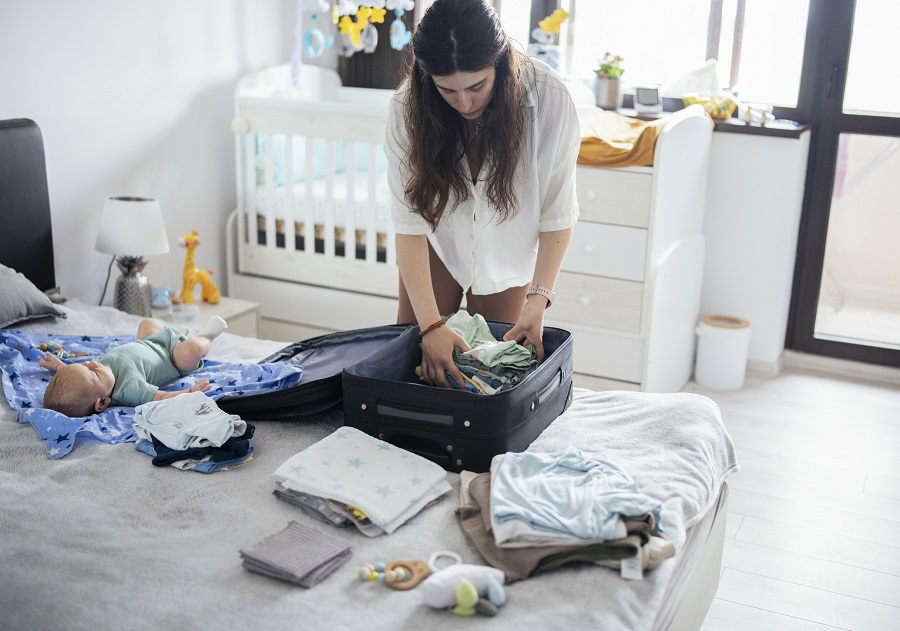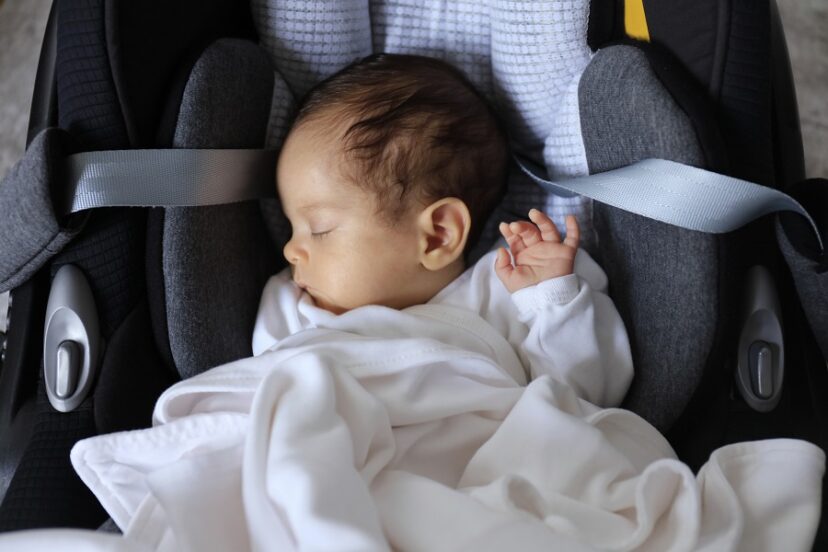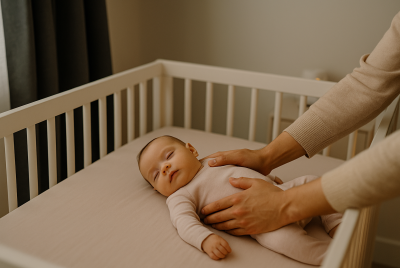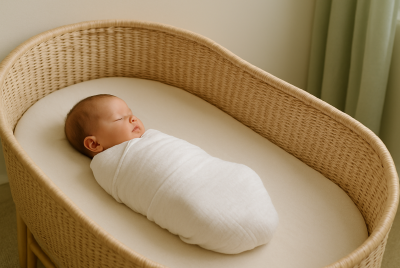Travel Bassinet: Guide to Choosing the Perfect Travel Bassinet
We may earn a commission for purchases made using our links. Please see our disclosure to learn more.
Traveling with a tiny human can be a wild ride! One minute you’re packing for a relaxing getaway, and the next you’re wondering if you need a U-Haul for all the baby gear. But let me tell you, there’s one item that’s worth its weight in gold (or maybe baby formula): the travel bassinet. Buckle up, as we dive into the wonderful world of portable baby beds!
Why You Need a Travel Bassinet
Picture this: It’s 2 AM, you’re in a hotel room that’s about as familiar to your little one and your bundle of joy is wailing like a car alarm. That’s when a travel bassinet becomes your knight in shining armor. It’s like a slice of home you can plop down anywhere, giving your baby a cozy, familiar spot to catch some Z’s. Trust me, when you’re bleary-eyed and desperate for sleep, you’ll be thanking your past self for this stroke of genius.
But it’s not just about sleep (though let’s be real, sleep is pretty darn important). A travel bassinet also gives your baby a safe space to hang out while you’re fumbling with hotel room coffee makers or trying to decipher foreign language TV channels.
Types of Travel Bassinets
Alright, let’s break down the types of bassinet:
Foldable Bassinets: These things fold flatter than a pancake. Perfect for when you’re playing luggage Tetris. They’re usually lightweight and come with a carrying case, making them ideal for trips where space is at a premium.
Pop-up Bassinets: Like magic, these appear in seconds. Great for those “I need a nap spot NOW” moments. They’re incredibly user-friendly and perfect for quick pit stops or visits to grandma’s house.
Backpack Bassinets: Part diaper bag, part bed. It’s like the superhero of baby gear. These are fantastic for day trips or urban adventures where you need to pack light but still want a safe sleep space for your little one.
Portable Cribs: The big daddy of travel beds. More space for the baby, less space in your trunk. These are best for extended stays or if your baby is on the older side and needs more room to wiggle.
Convertible Bassinets: The Swiss Army knife of bassinets. Bed, changing station, playpen – it does it all! Perfect for parents who love multifunctional gear and want to get the most bang for their buck.
Features to Look For
Now, don’t just grab the first bassinet you see. Here’s what to keep your peepers peeled for:
- Portability
Consider the weight, but also how it carries. Some bassinets come with shoulder straps, while others have handles. Think about what will work best for your travel style. If you’re a frequent flyer, something that can be easily carried through an airport is crucial.
- Ease of Setup
Look for bassinets with intuitive designs. Some pop up with a single motion, while others might require a few simple steps. Whatever you choose, make sure you can set it up quickly and easily, even when you’re exhausted and it’s dark.
- Comfort
Pay attention to the mattress quality. It should be firm enough for safety but soft enough for comfort. Some travel bassinets come with extra padding or the ability to adjust the mattress height, which can be a nice touch.
- Safety
Check for features like locking mechanisms on the legs, secure sidewalls, and breathable mesh panels. Also, make sure the bassinet meets safety standards in your country and any countries you plan to visit.
- Durability
Look for materials that are easy to clean and won’t wear out quickly. Reinforced seams, quality zippers, and sturdy frames are all good signs of a durable bassinet.
- Ease of Cleaning
Speaking of messes, look for bassinets with removable, washable covers. Because nothing says “vacation ruined” like a bassinet that smells like last week’s milk spill.
Some bassinets come with machine-washable parts, which can be a real lifesaver. Also, consider the material – is it easy to wipe down? Can it handle frequent cleaning without wearing out?
- Weight and Size
Think about where you’ll be using the bassinet. If you’re road-tripping, trunk space might not be an issue. But if you’re flying or using public transport, every inch and ounce counts.
Age and Weight Limits
Make sure your chosen bassinet can support your baby through your travels. You don’t want to be mid-trip when you realize your little one has outgrown their sleeping quarters.
Some bassinets have adjustable features that allow them to grow with your baby, which can be a great investment if you travel frequently.
Travel Bassinet vs. Regular Bassinet
Now, you might be thinking, “Can’t I just bring little Timmy’s regular bassinet?” Well, sure, if you want to lug around something with all the portability of a grand piano. Travel bassinets are like the cool, laid-back cousins of regular bassinets – ready for adventure and easy to tote around.
Regular bassinets are great for home use, but they’re often bulky, heavy, and not designed for frequent setup and takedown. Travel bassinets, on the other hand, are specifically engineered for life on the go. They’re typically lighter, more compact, and designed to be easily transported and quickly assembled.
Top Brands to Consider
When it comes to brands, you’ve got options:
Graco: The old reliable of baby gear. They’ve been in the game longer than some of us have been parents. Known for durability and practical designs, Graco offers a range of travel bassinets to suit different needs and budgets.
BabyBjörn: Sleek, simple, Swedish. It’s the IKEA of baby products (but thankfully, pre-assembled). Their travel cribs are particularly popular for their ease of setup and lightweight design.
Fisher-Price: Affordable and durable. They know babies are basically tiny tornadoes. Fisher-Price offers some great budget-friendly options that don’t skimp on quality.
Chicco: Italian design meets baby practicality. Bellissimo! Chicco’s travel bassinets often come with extra features like toy bars or storage pockets.
Lotus: For the eco-conscious, adventure-loving parents. Their bassinets are probably better traveled than most adults. The Lotus Travel Crib is a favorite among frequent travelers for its backpack-style carrying case.
How to Pack a Travel Bassinet

Packing a travel bassinet is an art form. Here’s how to master it:
Fold it like you’re auditioning for a Marie Kondo show. Most travel bassinets have a specific folding sequence – learn it, love it, live it.
Use the carrying case. It’s not just for show, people! It protects your bassinet from dirt and damage during transit.
Pack it last so it’s the first thing you can grab. Future you will be grateful when you’re setting up the sleeping area immediately upon arrival.
If you’re flying, consider whether you’ll check the bassinet or carry it on. Some compact models can fit in overhead bins, which can be handy if you have a layover or delay.
Travel Bassinet Accessories
Want to pimp your bassinet ride? Check these out:
Mosquito Netting: Because nobody likes bug bites, especially babies. This is particularly important if you’re traveling to areas with mosquito-borne illnesses.
Sun Shade: For those impromptu beach naps. A good sunshade can turn your bassinet into a versatile outdoor napping spot.
Extra Sheets: Trust me, you’ll need them. Pack at least two extra sets. They take up minimal space and can be a lifesaver.
Portable White Noise Machine: Drown out those noisy hotel neighbors! Some parents swear by these for helping babies sleep in unfamiliar environments.
Travel Blackout Curtains: These can be a game-changer for naps in bright hotel rooms or during those long summer evenings.
Pros and Cons of Travel Bassinets
Let’s keep it real. Here’s the good, the bad, and the baby drool-covered:
Pros:
Portability: Lighter than your diaper bag (probably). Comfort: A slice of home, wherever you roam.
Convenience: Setup faster than you can say “nap time”. Familiarity: Provides a consistent sleep environment for your baby.
Versatility: Can often be used for play or changing as well as sleep.
Cons:
Extra Cost: Another item on the never-ending baby shopping list.
Space Hog: It’s compact, but not invisible. You’ll still need to account for it in your luggage.
Limited Use: Your kid will outgrow it faster than those adorable onesies.
Learning Curve: You’ll need to practice setting it up before your trip. Potential for Forgetting: It’s one more thing to remember to pack.
Travel Tips for Using a Bassinet
Here’s how to become a travel bassinet pro:
Practice at Home: Don’t wait until you’re in a foreign country to figure out how this thing works. Set it up and take it down a few times before your trip.
Check Airline Policies: Unless you want your bassinet to become an overpriced carry-on. Some airlines offer bassinets for long-haul flights, which could save you from having to bring your own.
Pack Familiar Items: A favorite blanket can turn any bassinet into a home away from home. The familiar scent can help soothe your baby in a new environment.
Consider Your Destination: If you’re heading somewhere hot, make sure your bassinet has good ventilation. For colder climates, think about how you’ll keep your baby warm.
Have a Backup Plan: Sometimes, despite our best efforts, babies just won’t sleep in the travel bassinet. Be prepared with alternative soothing methods.
Making the Most of Small Spaces
Travel often means tight quarters. A good travel bassinet should fit snugly in a hotel room corner, a cruise ship cabin, or even a tent (for you adventurous types). It’s like Tetris, but with baby gear!
Get creative with your setup. Maybe the bassinet can double as a changing station during the day. Or perhaps it can be tucked into a closet when not in use. The key is to maximize the space you have without compromising on your baby’s comfort and safety.
Safety First: Travel Bassinet Regulations
This isn’t the place to cut corners, folks. Make sure your bassinet meets safety standards. It should be sturdier than your resolve to stick to your vacation diet.
In the US, look for bassinets that meet CPSC (Consumer Product Safety Commission) standards. If you’re traveling internationally, check the safety standards in your destination country as well.
Remember, safety guidelines can change, so it’s a good idea to check for any recalls or updated recommendations before you travel.
The Cost Factor: Budgeting for a Travel Bassinet
Travel bassinets come in all price ranges. While it’s tempting to go for the bargain bin special, remember: you get what you pay for. Think of it as an investment in your sanity.
Consider how often you’ll use the bassinet. If you’re frequent travelers, it might be worth splurging on a higher-end model that will stand up to lots of use. If it’s for a one-off trip, a more budget-friendly option might suffice.
Also, think about the resale potential. Some popular brands hold their value well, so you might be able to recoup some of your costs when your baby outgrows it.
Customer Reviews: What Parents Are Saying
Don’t just take my word for it. Check out what other parents are saying. Look for reviews that mention durability, ease of use, and how well it stands up to the baby tornado test.
Pay attention to reviews from parents who have similar travel styles to yours. A bassinet that works great for road trips might not be ideal for frequent flyers.
Sustainable Choices: Eco-Friendly Travel Bassinets
For the green parents out there, some brands offer eco-friendly options. Because saving the planet is cool, even when you’re changing diapers at 30,000 feet.
Look for bassinets made from sustainable materials like bamboo or organic cotton. Some brands also focus on recyclable packaging or have programs to repurpose or recycle old bassinets.
Where to Buy a Travel Bassinet
You can snag these lifesavers at baby stores, department stores, or online. Pro tip: check for sales. Because the only thing better than a travel bassinet is a discounted travel bassinet.
Online retailers often have a wider selection and it’s easier to compare features and prices. However, if you can, try to see the bassinet in person before buying. This will give you a better idea of the size, weight, and overall quality.
Conclusion: Is a Travel Bassinet Worth It?
A travel bassinet can be a game-changer for globetrotting parents. It’s a portable piece of home that can mean the difference between a restful vacation and feeling like you need a vacation from your vacation.
Sure, it’s one more thing to buy and pack, but the peace of mind and potential for better sleep (for everyone) make it a worthy investment. Plus, seeing your little one snoozing peacefully in exotic locations? Priceless.
FAQs
- What age is a travel bassinet suitable for? From itty-bitty newborn to “oh-my-god-they’re-sitting-up-already” stage (about 6 months). Always check the manufacturer’s guidelines, though.
- Can I use a travel bassinet on a plane? Usually, yes. But check with your airline first, unless you want your bassinet to become the world’s most expensive carry-on.
- How do I clean a travel bassinet? Most have removable, washable covers. Follow the cleaning instructions, or risk turning your bassinet into a science experiment.
- Are travel bassinets safe? When used correctly, absolutely. But always supervise your baby. A travel bassinet isn’t a baby-sitter.
- Do I really need a travel bassinet? If you enjoy sleep and sanity while traveling with a baby, then yes. Yes, you do.
There you have it, folks – the ultimate lowdown on travel bassinets. Remember, traveling with a baby is like trying to herd cats… underwater… while juggling. A good travel bassinet won’t solve all your problems, but it’ll give you one less thing to worry about. Now go forth and travel, you brave, sleep-deprived parents! May your journeys be filled with adventure, your bassinets be easy to assemble, and your babies sleep through the night (hey, we can dream, right?).




